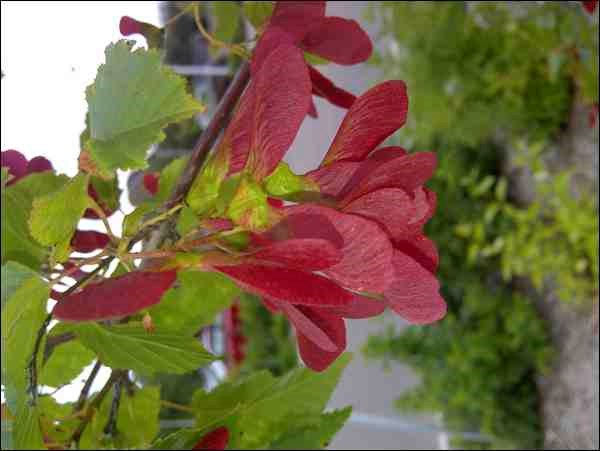When people say they want to incorporate fall colour in their landscape, I'm convinced what they really mean is they want to replicate in their backyard the blaze of fiery colour that engulfs Eastern Canada in September and October. The truth is, we can't deliver that on the Prairies. Here, fall colours are subtler - a blend of orange and yellow with a few hints of red and burgundy for contrast - more like the colour of embers rather than a full-blown conflagration. Fortunately, there are a few options we can use to introduce punches of bright red to an otherwise near-uniform yellow to light orange fall tapestry.
The Amur maple (Acer ginnala) and it's close relative, the Tatarian maple (A. tataricum), have yellow-orange to light red leaves in the fall depending on the selection or seed-source. However, there are three recent introductions that are real standouts: Embers and Flame Amur maple and Hot Wings Tatarian maple. The three are similar having small, dark green, three lobed leaves; can be single to multi-stemmed trees; grow best in part shade to full sun; prefer even moisture (but are somewhat drought tolerant once established); typically form a roundish canopy about 15 to 20 feet wide; and have a life-expectancy of about 60 years. They are an excellent choice for the city yard or as an accent tree in rural landscapes.
One feature these three have in common is that their numerous, double-winged samaras (seeds) turn bright red in August, adding an early splash of unexpected colour (note: their unimproved wild kin are at best merely red tinged). The encore, the real show-stopper, is in mid- to late-September when their dark green leaves reliably catch fire sporting shades of red as they respond to shorter days and cold, near-freezing evenings.
The differences are few. Embers is the shortest of the three, maxing out at 15 feet at maturity. Its reliable fall display of red, scarlet and burgundy leaves is preceded by scarlet seeds. Flame, slightly taller at 20 feet, has dark pink (watermelon) seeds followed by blazing red and scarlet leaves. Hot Wings is the tallest, reaching 25 feet. As might be expected from its name, the masses of seeds are a uniform bright cherry red. And compared to the other two, Hot Wings is more drought tolerant and performs better in alkaline soil.
For full disclosure and before I'm accused of being a climate-zone denier [again], the three cultivars are rated for USDA hardiness zone 3a. This means they have been reported to survive in areas with an average minimum extreme winter temperature of -40 to -37.2 C. Sounds like a bad winter's day in Saskatchewan. But rarely have I experienced worse in my more than 20 years on the Prairies (incidentally, most of Saskatchewan south of the boreal forest is in USDA zone 3a or warmer; Saskatoon is in USDA zone 3b). As further proof that I'm not blowing smoke, Hot Wings has just passed through a Prairie regional hardiness trial* with flying colours (*Prairie TRUST - Testing of Rural and Urban Shade Trees - managed by the Western Nursery Growers Group; www.prairietrees.ca). If you want to see specimens of Hot Wing take a stroll along the new section of Innovation Boulevard connecting the University of Saskatchewan campus and Innovation Place just north of the Canadian Light Source.
Where the garden season is as short as it is here on the Prairies, just add some fire to heat up the fall display.
- This column is provided courtesy of the Saskatchewan Perennial Society (www.saskperennial.ca; [email protected]). Check out our Bulletin Board or Calendar for upcoming horticulture events: Labour&Learn at the Forestry Farm; Plant & Seed Exchange; fall bulb sales; tour; garden information sessions.




